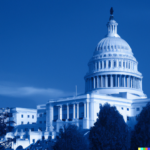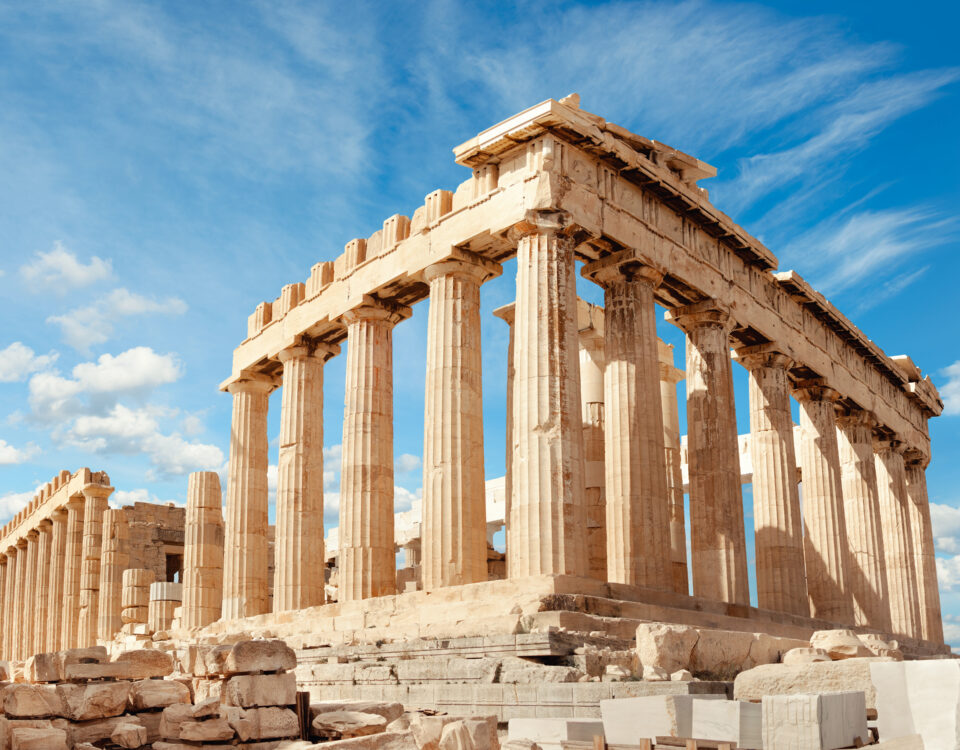
Glenlead delivers solution session on deceptive design at the Nobel Prize Summit in Washington D.C.
May 30, 2023Bethany Shiner, Glenlead Research Associate
In this blog, legal scholar and Glenlead research associate, Bethany Shiner, poses the question of how far educators in the UK have a legal duty to protect children’s right to a freedom of thought in education.
8 April 2023
The right to freedom of thought is an internationally recognised fundamental right in the sense that it is included in the main international human rights treaties, in many regional human rights treaties, as well as multiple national constitutions.[i] However, the recognition ends there, if you will, for no human rights court has authoritatively determined what exactly the right is; what does it protect, how, and when; how does it differ from the related rights of freedom of religion, conscience and expression? Scholars and practitioners are beginning to propose the answers to these questions. Consensus has at least formed around four key attributes of the right: 1. The right not to reveal one’s thoughts, 2. The right not to be punished for one’s thoughts, 3. The prohibition against impermissibly altering an individual’s thoughts, and 4. The right to an enabling environment.
One area remaining underexamined is the child’s right to freedom of thought. The Convention on the Rights of the Child (CRC) sets out some of the standards of child rights which all states who have signed up to the convention must meet. Although the CRC has a reputation for being paternalistic, it does include the right to freedom of thought. Article 14(1) says ‘States Parties shall respect the right of the child to freedom of thought, conscience and religion.’ Article 12(1) also states ‘States Parties shall assure to the child who is capable of forming his or her own views the right to express those views freely in all matters affecting the child, the views of the child being given due weight in accordance with the age and maturity of the child.’ Although article 12(2) then goes on to the specific circumstance of judicial proceedings in which a child must have the right to be heard, subsection 1 is broad enough to be applicable in various circumstances, just like article 14(1). Furthermore, Article 13(1) says ‘The child shall have the right to freedom of expression; this right shall include freedom to seek, receive and impart information and ideas of all kinds, regardless of frontiers, either orally, in writing or in print, in the form of art, or through any other media of the child’s choice.’
So, we can see that Articles 12-14 seek to recognise, preserve and protect the child’s mental autonomy and agency when it comes to receiving information, developing their own opinions and thoughts about things and being able to express those thoughts and for those expressions to be respected. In addition, Article 28 sets out the child’s right to education for the ‘development of the child’s personality, talents and mental and physical abilities to their fullest potential’ (Article 29, emphasis added).
In the context of education, and within Europe (recognising that the protection of child rights varies widely across the world and is largely determined, in relation to some Articles of the CRC to the socio-economic context of a specific country, as well as other factors like culture), the European Convention on Human Rights (ECHR) also protects the child’s right to education through Article 2 Protocol 1. This right has been fleshed out a little through case law from the European Court of Human Rights and contains protection for children from indoctrination at school or in an educational setting. But, Article 2 Protocol 1, like the CRC, brings the right of the parents to determine essential aspects of the child’s education to the fore. Article 2 Protocol 1, whilst enshrining the right to education, it was also meant to prevent States from pursuing an aim of indoctrination that might be considered as not respecting parents’ religious and philosophical convictions.
The right to freedom of thought and the right to education, on first blush, might seem complementary, compatible and mutually enforcing. In most circumstances they will be but in some they might not be. If we apply some of these rights to educational settings we may find that the child’s right to freedom of thought is trumped by the parents’/guardians’ right to ‘direct’ the child’s education or right for the child’s education and teaching to be in conformity with the parents’/guardians’ own religious and philosophical convictions, or it is trumped by other considerations.
If we consider the Prevent counter-extremism programme within the UK which imposes a duty upon educators to monitor children for signs of extremism and refer them if they have suspicions or concerns. Upon referral, the police will become involved and if a risk is considered, the child will be invited to accept mentoring, mental health support and educational support or career development. On one hand children must be protected from all the forms of exploitation, control and abuse that can come with radicalisation and extremism. On the other hand, children need to be and feel free to test out ideas and test the limits of what they are taught for themselves which is why the programme has long been accused of stigmatising certain groups and restricting freedom of expression. The prevent programme has been accused of silencing staff and students within an educational setting, which is akin to a chilling effect on speech, and possibly thought.
We may also consider the practice, which is mandated by law, in the US whereby in exchange of discounted internet access or devices for schools and libraries users, many of which are children, online activity is monitored and recorded (beyond safeguarding).[ii] Furthermore, certain content and websites can be blocked (and are blocked) such as websites about contraception. Research on the right to freedom of thought has advocated for digital surveillance and data collection to be considered a violation of the right when it that information obtained or inferred from that data is used to determine what information we might be fed online. Indeed, the United Nations Committee on the Rights of the Child recently said that States Parties ‘should ensure that automated systems or information filtering systems are not used to affect or influence children’s behaviour or emotions or to limit their opportunities or development’ referring to the right to freedom of thought. considered that emotional analytics might interfere with children’s right to freedom of thought, conscience and religion and said that.
These are just two scenarios where the right to education and the right to freedom of thought might not sit comfortably with one another and policymakers, educators and even courts will have to work out how to resolve any conflict. If we take the fourth attribute, the right to an enabling environment, it is clear that education should contribute towards the ‘elimination of ignorance and illiteracy throughout the world and facilitating access to scientific and technical knowledge and modern teaching methods’ (Article 28(3) CRC) and help that child develop their ‘personality, talents and mental and physical abilities to their fullest potential’ (Article 29, CRC). So, in one sense education satisfies the right to freedom of thought in exposing the child to a plurality of information, views, educational materials and so on. Yet, it is also a setting in which the right might not be enhanced but controlled, or exploited which is why the right to education, under the ECHR, prohibits indoctrination. Relevant cases include those that question religious education and whether the inability or difficulty of children to opt out from religious education, or the fact the curriculum features only one religion amounts to (religious) indoctrination given a child’s vulnerability to being ‘easily influenced’.
The right to freedom of thought is considered to be an absolute right which given the lack of substantive content, contours or limits to the right has rendered it unworkable by the courts because it would establish many everyday activities as interfering with the right. However, I think that the right can be brought to life if it is understood that it attracts a threshold which must be met before the right can bite. Elements of the threshold should include the vulnerability of the alleged victims, whether through age, mental capacity, or other factors like being detained; the presence of a high-level of deception; an element of coercion; powerlessness through an asymmetrical power imbalance or an abuse of power; evidence of exploitation, or when there is a harmful practice involved.
More extreme examples of a violation of the child’s right to freedom of thought in an ‘educational’ setting would be ‘re-education’ camps, like the ones China is forcing its Uyghur population into, or assimilation policies, like the one’s in Canada which tore indigenous children away from their families and forced them into residential schools to assimilate Indigenous children into Euro-Canadian culture and where there were horrific levels of abuse leading to hundreds of deaths. In these examples the threshold can be quite clearly met and indeed it is plain that there are other human rights violations at play, but until now the right to freedom of thought has not featured in that list. For most educational settings the issue will be more nuanced but it is certainly high time that this fundamental right is given due attention in the context of children’s education worldwide.
Bethany Shiner is a Senior Lecturer in the School of Law at Middlesex University London and completing her PhD in Law at the University of Oxford. Beth has published widely on the right to the freedom of thought and is editing The Cambridge Handbook on the Right to Freedom of Thought due for publication in 2024. Prior to joining academia, Bethany was a judicial review legal aid solicitor and is a qualified solicitor-advocate of England and Wales.
[i] For example, article 18 of the International Covenant on Civil and Political Rights; article 9 of the European Convention on Human Rights; article 19 of the Constitution of Zambia 2016.
[ii] The Children’s Internet Protection Act requires that schools or libraries that receive discounts on internet access and computers must monitor the online activities of minors.



